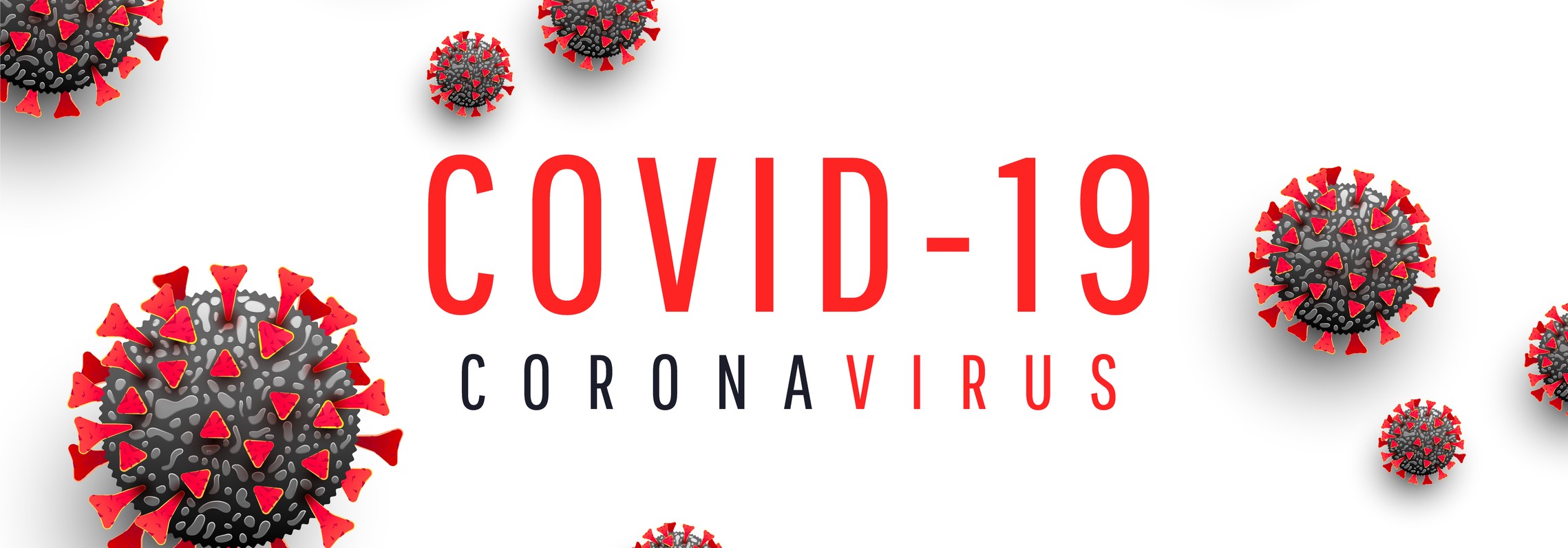Letter calls on Secretary Azar to “speak up” and be an advocate for CDC and public health
(Washington, DC – July 7, 2020) – The expertise of the U.S. Centers for Disease Control and Prevention (CDC) and all public health agencies is critical to protecting Americans’ health during the COVID-19 crisis, said a letter to Health and Human Services Secretary Alex Azar from 347 health and public health organizations released today.
The authoring organizations, including the American Public Health Association, Association of State and Territorial Health Officials, Big Cities Health Coalition, National Association of County and City Health Officials and Trust for America’s Health, expressed “deep concern” about increasing reports of resistance to evidence-based public health messages and threats to public health leaders and agencies, and called on the Secretary to be an advocate for public health.
At this sentinel moment, during the worst public health emergency in over a century, all of the nation’s leaders must resist any efforts that would undermine the critical role of the CDC to respond to the pandemic and must be an advocate for increased investment in public health, said the letter signatories.
“Secretary Azar, we urge you to speak up and amplify the critical role of CDC and that of all public health agencies during this monumental crisis,” the letter said.
The public health community’s work to respond to the pandemic, via the federal government, including within the CDC, and at the state, local, territorial and tribal levels, has been tireless but has been hamstrung by shrunken programs and inadequate technology; the result of decades of underfunding.
Public health leaders are calling attention to the need for CDC to play a central role as the nation’s navigates the COVID-19 pandemic, including:
“CDC is the world’s premier public health institution and should be treated as such during this pandemic. It must be appropriately funded and allowed to speak based on the best available science and with an unfettered voice,” said John Auerbach, President and CEO of Trust for America’s Health.
“When you look at the global response to the COVID-19 pandemic, countries that listen to and prioritize public health fare best,” said Dr. Tom Frieden, former director of the CDC, President and CEO of Resolve to Save Lives, an initiative of Vital Strategies. “Trying to fight this pandemic without daily, public guidance from the CDC is like fighting with one hand tied behind your back.”
“There’s no federal agency better suited to lead the response to this unprecedented pandemic. CDC has experts who have studied and helped control coronaviruses and other viral threats for decades, and can help our country emerge from this crisis,” said Dr. Julie Gerberding, former director of the CDC, Co-Chair CSIS Commission on Strengthening America’s Health Security.
The COVID-19 crisis has also illuminated the ways in which racial inequities impact health. Higher rates of COVID-19 deaths within communities of color illustrate the importance of all of CDC’s work, including its focus on chronic disease prevention. It is not possible to effectively meet the needs of the American people if that scope is narrowed.
The letter furthermore calls on Secretary Azar to be an advocate for increased funding for CDC’s core budget. While emergency supplemental funding has been critical to begin to address the immediate COVID-19 response needs, robust, sustained, and predictable funding for its full public health mission is essential to sustain its public health activities and to prevent the next emergency. Increasing the federal investment in public health will be particularly important, as state and local government budgets are likely to be severely hampered in the coming fiscal year due to tax revenue losses during the COVID-19 related economic shutdown.
Today’s laser focus should be on preventing further deaths and disruptions due to the pandemic and the CDC, as the world’s premier public health institution, should be at the helm of that effort, the letter said. Once the pandemic is controlled, the CDC, other federal agencies, state and local leaders and the public health community should collaboratively evaluate their performance and must acknowledge and address shortcomings of the response in order to be better prepared for the next public health emergency.
Signing the letter were:
1,000 Days
Academic Health Resource
Academy for Eating Disorders
Action on Smoking and Health
Advocates for Better Children’s Diets
AES Consulting
AFSCME
AIDS Alliance for Women, Infants, Children, Youth & Families
AIDS United
AlohaCare
Alzheimer’s and Dementia Alliance of WI
Alzheimer’s Association
Alzheimer’s Impact Movement (AIM)
Alzheimer’s of Central Alabama
Alzheimer’s Orange County
American Academy of Family Physicians
American Academy of Pediatrics
American Academy of Pediatrics, California
American Association for Clinical Chemistry
American Association for Dental Research
American Association for the Study of Liver Diseases
American Association of Colleges of Pharmacy
American Association on Health and Disability
American Cancer Society Cancer Action Network (ACS CAN)
American College Health Association
American College of Clinical Pharmacy
American College of Clinical Pharmacy (ACCP)
American College of Obstetricians and Gynecologists
American College of Physicians
American College of Preventive Medicine
American Council on Exercise
American Dental Association
American Foundation for Suicide Prevention
American Geriatrics Society
American Heart Association
American Kidney Fund
American Lung Association
American Medical Women’s Association
American Organization for Nursing Leadership
American Public Health Association
American School Health Association
American Sexual Health Association
American Society for Clinical Pathology
American Society for Microbiology
American Society of Hematology
American Society of Pediatric Nephrology
American Society of Tropical Medicine & Hygiene
American Thoracic Society
American University Department of Health Studies
APLA Health
Arizona Community Health Workers Association
Arizona Public Health Association
Art & Science of Health Promotion Institute
Asian Health Coalition
Asian Health Services
Association for Prevention Teaching and Research
Association for Professionals in Infection Control and Epidemiology
Association of American Cancer Institutes
Association of American Medical Colleges
Association of Asian Pacific Community Health Organizations (AAPCHO)
Association of Departments of Family Medicine
Association of Family Medicine Residency Directors
Association of Food and Drug Officials
Association of Immunization Managers
Association of Maternal & Child Health Programs
Association of Minority Health Professions Schools
Association of Ohio Health Commissioners
Association of Population Centers
Association of Public Health Laboratories
Association of Schools and Programs of Public Health
Association of SNAP Nutrition Education Administrators
Association of State and Territorial Health Officials
Association of State Public Health Nutritionists
Autistic Self Advocacy Network
Big Cities Health Coalition
Bipartisan Policy Center
Black AIDS Institute
Black Men’s Health Initiative
Boston Public Health Commission
Bristol Health Equity Zone
Bronx Health REACH
California Coalition for Children’s Safety and Health
California Immunization Coalition
California Pan-Ethnic Health Network
California School Nurses Organization
Cambridge Public Health Department
Campaign for Tobacco-Free Kids
Cancer Council of the Pacific Islands
Caring Ambassadors Program
Cascade AIDS Project
Center for Community Resilience
Center for Health and Learning
Center for Law and Social Policy (CLASP)
CenterLink: The Community of LGBT Centers
Ceres Community Project
ChangeLab Solutions
Child Welfare League of America
Children’s Environmental Health Network
Children’s Mental Health Network
Christian Council of Delmarva
City of Houston Health Department
City of Milwaukee of Health Department
Climate for Health, ecoAmerica
Coalition for a Tobacco Free Arkansas
Coalition of National Health Education Organizations
Cohen Veterans Bioscience
Colorado Association of Local Public Health Officials
Colorado Public Health Association
Colorado Public Health Nursing Leaders
Community Access National Network
Community Education Group
Connecticut Public Health Association
Cooley’s Anemia Foundation
Council of State and Territorial Epidemiologists
Counter Tools
County Health Executives Association of California
Cuyahoga County Board of Health
Cystic Fibrosis Foundation
Delaware Academy of Medicine
Delaware Academy of Medicine / Delaware Public Health Association
Delaware Academy of Medicine and the Delaware Public Health Association
East Shore District Health Dept.
Eating Disorders Coalition for Research, Policy & Action
Education Development Center
Element Health, Inc.
Endocrine Society
Enlace Chicago
Epilepsy Alliance America
Epilepsy Foundation
Equality California
Eta Sigma Gamma
Families USA
Family Voices
Fetal Alcohol Syndrome Information Network
FHI 360
FIRST Family Service Center
Fletcher Group, Inc.
Florida Institute for Health Innovation
Florida Public Health Association
Foundation for Healthy Generations
Galaxy Aviation Corp
Gateway Region YMCA
George Mason University Center for Climate Change Communication
GLMA: Health Professionals Advancing LGBTQ Equality
Global Alliance for Behavioral Health and Social Justice
Global Health Council
Global Health Technologies Coalition (GHTC)
Global Healthy Living Foundation
Global Liver Institute
Grand Traverse County Health Department
Green & Healthy Homes Initiative
Harm Reduction Michigan
Hawaii Public Health Association
Hawaii State Dept of Health, Office of Primary Care and Rural Health
Health by Design
Health Care Improvement Foundation
Health Enhancement Research Organization (HERO)
Health Resources in Action
Healthcare Foundation Northern Sonoma County
Healthcare Ready
HealthHIV
HealthPartners Institute
Healthy Schools Campaign
Healthy Weight Partnership Inc.
Heartland Alliance
Hep B United
Hepatitis B Foundation
HIV Medicine Association
Hogg Foundation for Mental Health
Hope and Help Center of Central Florida, Inc.
Idaho Public Health Association
Immunization Action Coalition
Immunize Nevada
Impetus – Let’s Get Started LLC
Indiana Public Health Association
Infectious Diseases Society of America
Institute for Family Health
Interdisciplinary Association for Population Health Science (IAPHS)
International Association of Emergency Managers
International Association of Fire Chiefs
IWC Resources, LP
Jeffrey Modell Foundation
Journal of Public Health Management and Practice
Jump IN for Healthy Kids
Kaplan Health Innovations
Kentucky Health Departments Association
KidsAndCars.org
L.A. Care Health Plan
Lakeshore Foundation
League of American Bicyclists
Linn County Public Health
Louisiana Community Health Worker Outreach Network
Louisiana Public Health Association
Lupus and Allied Diseases Association, Inc.
Macoupin County Public Health Department
Maine Public Health Association
March of Dimes
MaryCatherine Jones Consulting, LLC
Maryland Association of County Health Officers (MACHO)
Maryland Office of Minority Health
Massachusetts Public Health Association
Medicago
MEND Foundation
Metropolitan Group
Michigan Association for Local Public Health
MindWise Innovations
Minneapolis Health Department
Mississippi Public Health Institute
Montana Public Health Association
Monterey County Health Department
Morehouse School of Medicine
MountainCare
Multnomah County Health Department
NAACP
NAPHSIS
NASTAD
National Adult Day Services Association
National Association of Chronic Disease Directors
National Association of Community Health Workers
National Association of County and City Health Officials
National Association of Pediatric Nurse Practitioners
National Association of School Nurses
National Athletic Trainers’ Association
National Birth Equity Collaborative
National Center for Disaster Preparedness, Columbia University
National Center for Healthy Housing
National Coalition for LGBT Health
National Coalition for the Homeless
National Coalition of STD Directors
National Environmental Health Association (NEHA)
National Forum for Heart Disease & Stroke Prevention
National Hemophilia Foundation
National Kidney Foundation
National Lipid Association
National Medical Association (NMA)
National Network of Public Health Institutes
National Nurse-Led Care Consortium
National Prevention Science Coalition to Improve Lives
National REACH Coalition
National Safety Council
National Viral Hepatitis Roundtable
National WIC Association
Nebraska Association of Local Health Directors
Network for Environmental & Economic Responsibility of United Church of Christ
Nevada Public Health Organization
Nevada Rural Hospital Partners
New Jersey Association of County and City Health Officials
New Jersey Public Health Association
New York State Public Health Association
North American Primary Care Research Group
North Carolina Healthcare Foundation
Northwest Center for Public Health Practice
NYU Grossman School of Medicine
NYU School of Global Public Health
Ohio Public Health Association
Onyx Strategic Consulting LLC
Pacific Island Health Officers Association
Partnering for Community Transformation Inc
Partnership to Fight Chronic Disease
Partnership to Fight Infectious Disease
PATH
Patrick Risha CTE Awareness Foundation
Pawtucket Central Falls Health Equity Zone
Peggy Lillis Foundation
Pennsylvania Public Health Association
PFLAG National
Population Association of America
Population Health Alliance
Prevent Blindness
Prevent Child Abuse America
Prevention Institute
Preventive Cardiovascular Nurses Association
Public Health Advocates
Public Health Alliance of Southern California
Public Health Foundation
Public Health Institute
Public Health Law Center
Public Health Solutions
Puerto Rico Public Health Association
Pulmonary Hypertension Association
Redstone Global Center for Prevention and Wellness GWU
Research!America
Residential Eating Disorders Consortium
RESOLVE
Resolve to Save Lives, an initiative of Vital Strategies
Respiratory Health Association
Rhode Island Department of Health
RiverStone Health
Rural Health Association of Tennessee
Rural Health Association of Utah
Safe Routes Partnership
Safe States Alliance
Samueli Integrative Health Programs
SANIPLAN
School-Based Health Alliance
SF Hep B Free – Bay Area
SHAPE America – Society of Health and Physical Educators
Shoals Community Clinic
Silver State Equality-Nevada
Smoke Free St. Joe
Society for Advancement of Violence and Injury Research
Society for Maternal-Fetal Medicine
Society for Public Health Education
Society of State Leaders of Health and Physical Education
Society of Teachers of Family Medicine
Southern California Public Health Association
Southwick BOH
Stanislaus County Medical Society
Susan G. Komen
Tennessee Justice Center
Tennessee Public Health Association
Texas Public Health Association
The AIDS Institute
The Broussard Company
The Center for Community Resilience, George Washington University
The Consortium
The Foundation for Sustainable Communities
The George Washington University (GW) Cancer Center
The Gerontological Society of America
The Immunization Partnership
The John A. Hartford Foundation
The Kennedy Forum
The Los Angeles Trust for Children’s Health
The National Commission for Health Education Credentialing, Inc
The Nourished Principles, LLC
The Permanente Medical Group
Thomas Jefferson University
Training Resources Network, Inc.
Treatment Action Group
Trillium Health
Trust for America’s Health
Truth Initiative
U.S. Breastfeeding Committee
UCLA Fielding School of Public Health
UNC Gillings School of Global Public Health
United Ostomy Associations of America
United Way of Greenwood and Abbeville Counties
University of Washington Department of Global Health
University of Washington School of Nursing
University of Washington School of Public Health
University of Wisconsin Population Health Institute
USAgainstAlzheimer’s
Vaccinate Your Family
Washington State Association of Local Health Officials
Washington State Department of Health
Washington State Public Health Association
WelCore Health, LLC
West Valley Neighborhoods Coalition
Whitefoord
Winer Family Foundation
Wisconsin Public Health Association
Women Of A Certain Age
WomenHeart: The National Coalition for Women with Heart Disease
Women’s Resource Center
Woodhull Freedom Foundation
Xavier University for Population Health
YMCA of the USA
Zell Community Health Strategies


